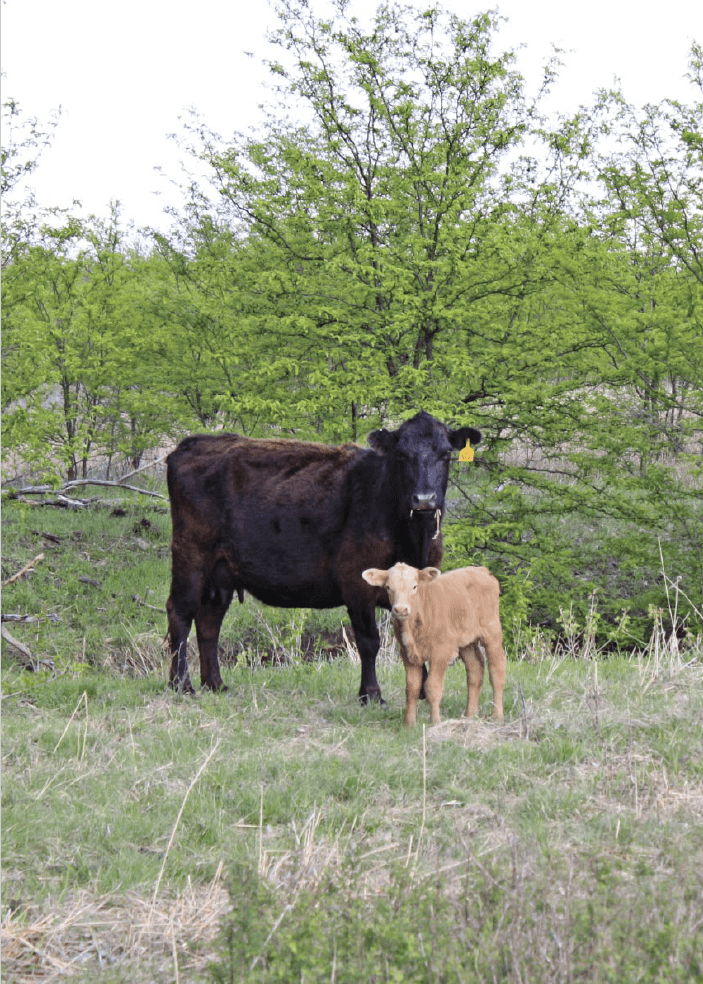

In the world of agriculture, ensuring the well-being of cattle is of utmost importance at the intersection of husbandry and production.
One disease that poses a significant threat to cattle health is bovine anaplasmosis. In this article, we are privileged to have Dr. Mark Spare, a renowned veterinarian, shed light on this enigmatic disease.
Anaplasmosis is a tricky bacterial disease that invades and infects the red blood cells of cows, causing significant health issues. It spreads between cattle through bites from ticks, flies, and even needle punctures.
Once inside an infected red blood cell, the cow’s immune system is put on red alert to destroy those infected cells, leading to anemia and various clinical signs. Older cows are more susceptible to severe symptoms, but younger calves can also be affected.

Spotting anaplasmosis in cows can be challenging, but certain signs may indicate its presence. Around three weeks after infection, affected cows may appear depressed, run a fever, and sometimes develop a yellowish tinge around their eyes.
In severe cases, cows may become aggressive due to oxygen deprivation. Other signs documented in the field and in literature are weight loss and late-term stillborn calves or abortions.
It is worth noting that cows that survive the infection become lifelong carriers, contributing to the spread of the disease by harboring the bacteria in their system and providing a pool of bacteria to infect other cattle.
Dr. Mark Spare and his team embarked on an ambitious research project in Kansas to gain a deeper understanding of anaplasmosis.
Their study involved surveying over 9,000 cattle across 900 operations, yielding valuable insights into the disease’s prevalence in different regions.
Results showed that western areas of the state had relatively low infection rates, although higher than expected, while the central and eastern parts had a higher prevalence.
The relative prevalence between regions demonstrated the potential significance of cattle movement across regional boundaries in transferring infection from one region to another.
Additionally, the study highlighted the potential positive impact of vaccination, with higher rates observed in the eastern regions of the state, overlapping with the highest areas of prevalence.

Anaplasmosis presents a complex web of challenges due to its unique characteristics and unpredictability.
Even in areas where many cattle are infected, severe clinical signs can still occur, making management a difficult task.
This complexity underscores the need for comprehensive approaches to control and prevention.
Judiciously administered antibiotics, robust insect control, testing, and vaccination are all crucial tools in the battle against anaplasmosis.
Appropriate timing of these tools can positively affect the profitability of a ranch by mitigating the effects of the disease before they are severe.
Although the available vaccine may not provide complete protection, it does stimulate an immune response, reducing the severity of the disease.
Comparing it to other vaccines, the anaplasmosis vaccine has proven effective in producing the desired immune response.

As the agricultural community unites to combat anaplasmosis, vigilance and collaboration are key.
By understanding the transmission dynamics, recognizing clinical signs, and implementing comprehensive control measures, we can collectively protect our cattle and ensure the health of the industry.
Anaplasmosis remains a formidable foe in the realm of agriculture, particularly for bovines and their caregivers.
By delving into its mysteries, we gain insights that help us safeguard cattle health. Dr. Mark Spare’s research and expertise offer invaluable guidance for tackling this disease.
Let us work together, combining vaccination efforts and strategic vector control, to mitigate the impact of anaplasmosis on our cattle and the agricultural world at large.
Mark Spare returned to his Clark County, Kansas, roots in August 2022 to join the Ashland Veterinary Center (AVC) team after earning his PhD and DVM degrees at K-State’s School of Veterinary Medicine in 2019. Prior to entering vet school, Mark took advantage of several opportunities to gain hands-on experience, including a stint in Russia during the development of the largest beef operation in Russia. His collective body of experience in America and abroad renewed the value of his upbringing and solidified his decision to make a career out of serving others in agriculture through the practice of veterinary medicine. As an AVC veterinarian, Mark provides care to both small and large animals. He focuses on herd health, diagnosis and nutritional consultation. Mark also assists with AVC’s semen sales and extensive breeding services, including synchronization, artificial insemination, ultrasound pregnancy determination and palpation with the goal of increasing producer profitability. Mark and his wife, Kayla, are parents to three daughters: Elizabeth, Lydia and Moriah.
Get all Doc Talk episodes straight to your email inbox!